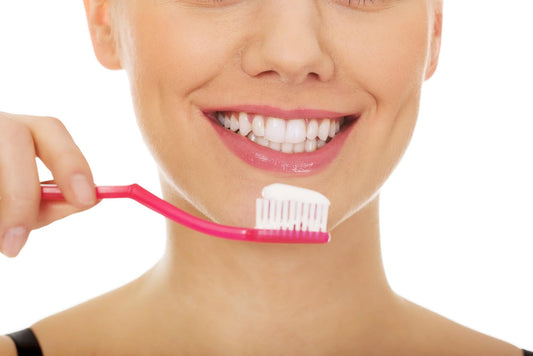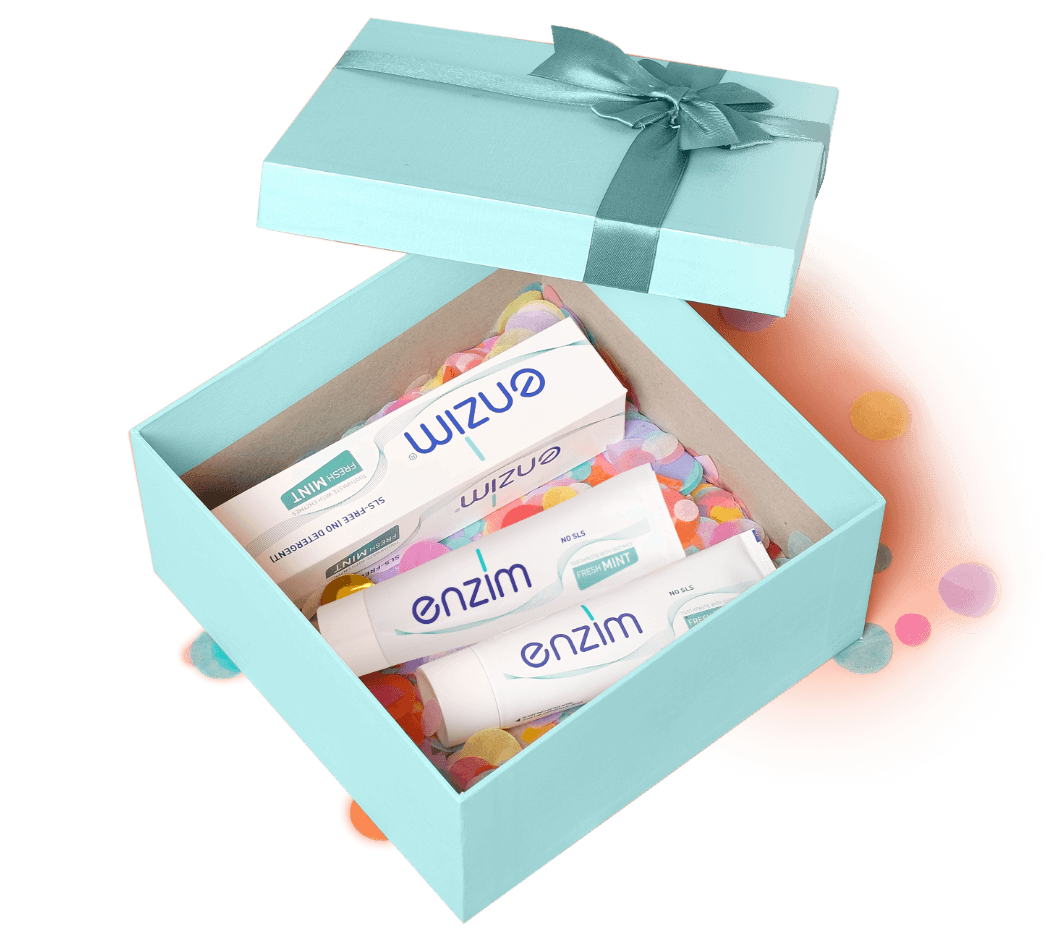Best Toothpastes for Sensitive Teeth: A Clear, Science-Led Guide (Singapore 2025)

Best Toothpastes for Sensitive Teeth: A Clear, Science-Led Guide (Singapore 2025) - Enzim Singapore
Why sensitivity happens and why the right paste matters
A sudden zing from iced water or a dull ache from hot soup is the hallmark of tooth sensitivity. In most cases, dentine beneath the enamel has been exposed by gum recession or enamel wear. Dentine contains thousands of dentin tubules that lead to the nerve. When stimuli move fluid inside these tubules, nerve endings fire and you feel pain. Triggers include acidic foods, freezing air, or overly vigorous brushing.
Daily toothpaste choice influences this condition more than many people realise. Some pastes are gentle and restorative; others are harsh surfactants that leave the mouth feeling stripped. If you want comfort that lasts, start by matching your needs to the right toothpaste for sensitive teeth and then build good habits around it.
Sensitive Toothpaste
To count as an effective sensitive toothpaste, a product must do three things reliably. First, it should help block or calm the pain pathway so that daily activities feel normal. Secondly, it should support the tooth surface through fluoride-aided enamel strengthening. Finally, it should clean without adding to irritation; that means a low abrasive profile and a formulation that is kind to tissues.
Sensitive Relief Toothpaste
Modern sensitive relief toothpaste tends to follow one or both of these mechanisms:
-
Tubule occlusion. Materials such as calcium carbonate, stannous fluoride, hydroxyapatite, or NovaMin’s bioactive glass deposit inside the dentinal tubules, creating a protective barrier that reduces fluid movement. This is a physical block to stimuli.
-
Nerve desensitisation. Actives such as potassium nitrate diffuse into the tooth and raise the excitation threshold of the nerve. This is a biological dampening of the signal.
An ideal toothpaste for sensitive teeth also incorporates fluoride, commonly sodium fluoride or stannous salts, for remineralisation and tooth decay prevention.
What to avoid: the problem with SLS and harsh foams
Many mainstream pastes rely on sodium lauryl sulfate (SLS) to generate abundant foam. While foam can feel satisfying, SLS is a detergent that can irritate cheeks and gums, aggravate ulcers, and increase surface roughness that encourages plaque buildup. For individuals with existing tooth sensitivity, the combination of irritation and surface changes can exacerbate discomfort. Switching to an SLS-free fluoride toothpaste with a thoughtful surfactant system is often the single most effective change you can make.
Evidence-based ingredients to look for
When assessing the best toothpastes for sensitive teeth, prioritise products that clearly state one or more of the following active ingredients and properties.
1) Potassium nitrate
Potassium ions diffuse through dentine and temper nerve excitability. Consistent twice-daily use can make cold drinks and air far more tolerable within two to four weeks. Many high-performing toothpastes for sensitive teeth rely on this agent.
2) Tubule-blocking minerals
-
Stannous fluoride: Offers dual benefits, caries protection and occlusion, while also supporting gum health when plaque is controlled.
-
Calcium carbonate and arginine Form mineral plugs in open tubules; some pastes allow for direct fingertip application, providing rapid relief.
-
Hydroxyapatite: The tooth’s own mineral used in certain pastes to coat micro-defects and reduce transmission of stimuli.
3) Balanced abrasivity
A sensible RDA and low-abrasive silica blend preserves enamel while removing stain and debris. Overly abrasive toothpaste risks accelerating wear, especially with aggressive brushing.
4) Supportive co-actives
Moisturising or soothing ingredients, such as protein complexes or allantoin, can make daily use more comfortable. Where taste is a concern, measured flavour oils avoid stinging.
Enzyme-powered, detergent-free care
An alternative to standard detergent-heavy formulas is the enzyme- and protein-based approach. Saliva naturally contains enzymes that moderate harmful bacteria. Some modern products supply compatible enzymes, such as amyloglucosidase, glucose oxidase, and lactoperoxidase, along with protective proteins like lysozyme and lactoferrin. Rather than scrubbing everything away, these pastes help the mouth’s own chemistry curb unwanted microbes and maintain a stable environment. For those who struggle with ulcers or find strong foams uncomfortable, this avenue of toothpaste for sensitive teeth is worth serious consideration.
The short list: the best toothpaste for sensitive teeth by mechanism
Below is an unbiased, mechanism-based guide to help you choose the best toothpaste for sensitive teeth that fits your specific situation in Singapore.
Enzyme-led, SLS-free daily drivers
Profile: Works with saliva biology, avoids SLS, aims for comfort over the long term.
-
Enzyme and protein systems with potassium nitrate and gentle silica. Well-suited to adults who experience frequent triggers yet dislike heavy foams. These formulas are usually positioned as everyday toothpaste for sensitive teeth, offering calm nerves plus a microbiome-friendly clean. Some also emphasise ethical manufacturing and food-grade ingredients.
Strengths: All-round gentleness, fewer ulcer flare-ups, steady relief with sustained use.
Watch-outs: Not designed as a strong whitener; relies on consistent daily practice rather than instant, dramatic effects.
Tubule-occluding, fast-acting options
Profile: Physically seal tubules for quicker symptom control.
-
NovaMin (bioactive glass). Releases calcium and phosphate to deposit a tooth-like mineral on exposed dentine.
-
Arginine/calcium carbonate systems. Can be massaged onto trouble spots before bed for short-term comfort.
-
Stannous fluoride variants. Provide occlusion and antimicrobial support for plaque management.
Strengths: Noticeable comfort for cold or sweet stimuli; helpful when a single tooth has become reactive.
Watch-outs: Some pastes include SLS; verify labelling if you are ulcer-prone.
Gum-focused sensitive care
Profile: Addresses sensitivity that co-exists with bleeding or tenderness.
-
Stannous fluoride bases with elevated plaque control.
-
Support for gingival tissues where recession or gingivitis has contributed to exposed dentine.
Strengths: Helps people whose discomfort stems from gum problems that expose root surfaces.
Watch-outs: Taste and mouthfeel can be strong; ensure you tolerate the flavour system.
Comparison at a glance
|
Feature / Emphasis |
Enzyme-driven SLS-free |
NovaMin occlusion |
Arginine occlusion |
Stannous fluoride sets |
|
SLS-free comfort |
Very strong |
Variable |
Variable |
Variable |
|
Nerve calming (potassium nitrate) |
Often included |
Optional |
Optional |
Optional |
|
Tubule block |
Light via proteins |
Strong |
Strong |
Moderate–strong |
|
Caries defence |
Fluoride as standard |
Fluoride as standard |
Fluoride as standard |
Built-in with stannous |
|
Best for |
Long-term daily use, ulcer-prone users |
Quick symptom control |
Spot relief and daily |
Sensitivity with gum concerns |
Selecting the best toothpaste for sensitive teeth is not about brand loyalty; it is about matching mechanism to your triggers, tolerance for flavour and foam, and your long-term goals.
How to use a sensitive-care paste for real results
-
Brush twice daily for two minutes with a soft brush and a small, pea-sized amount. Consistency matters more than brute force.
-
Do not rinse immediately. Spit out the foam and leave a slight film to prolong contact with fluoride and actives.
-
Massage for spots. With occluding pastes that allow it, gently rub a small amount on a sensitive tooth for a minute before bed.
-
Tame the acid cycle. Limit exposure to acidic foods and sparkling drinks. After sour foods, wait at least thirty minutes before brushing to avoid scuffing softened surfaces.
-
Ease up on pressure. Aggressive brushing accelerates wear and recession. Angle the bristles at 45 degrees to the gumline and let the brush do the work.
-
Floss or use interdental brushes daily. Reduced plaque load at the necks of teeth improves comfort and supports oral hygiene.
-
Consult your dentist. Persistent pain can signal a crack, decay, or bruxism. Topical varnishes, sealants, or a night guard may be recommended alongside home care.
Where whitening, natural claims, and trends fit in
Many people want stain removal without flare-ups. If you are sensitivity-prone, be cautious with strong whitening toothpaste or very gritty products, as they can feel harsher than necessary. A low abrasive silica blend is safer for routine use. Interest is also growing in natural toothpaste, yet natural does not guarantee gentle; scrutinise abrasivity and surfactants. A small subset of users finds benefit from charcoal toothpaste, but its abrasivity and staining potential can be problematic on exposed root surfaces, so it is rarely ideal for dentin hypersensitivity.
If whitening is a priority, consider alternating days or using a mild whitening paste in the evening while keeping your most soothing toothpaste for sensitive teeth as the daily mainstay. This balanced routine offers stain control without surrendering comfort.
Understanding labels and seals
In North America, the ADA Seal of Acceptance indicates a product has met specific safety and efficacy criteria in its category. While many products sold in Singapore are not submitted for that particular scheme, the concept is useful: prefer companies that publish test data, specify exact actives, and describe mechanisms clearly. Locally, also consider manufacturing transparency, quality certifications, and whether claims are aligned with evidence.
Practical picks for common scenarios
-
I hate harsh foam and get ulcers easily. Choose an SLS-free, enzyme-powered toothpaste for sensitive teeth that includes potassium nitrate and sodium fluoride.
-
I need relief this week for a specific tooth. Use an occluding paste with arginine or NovaMin for the affected area, then transition to your gentlest daily driver.
-
My gums bleed and are receding. A stannous-fluoride-based sensitive paste can help control plaque around the gumline and reduce exposure of root surfaces.
-
I want a single tube that does everything reasonably well. Look for a formula that combines potassium nitrate with tubule occlusion and balanced abrasivity for complete protection without showy claims of maximum strength.
Honest notes on less-discussed actives
-
Strontium chloride appears in some legacy formulas as a tubule-blocking salt. It can help certain users, though modern systems more often rely on stannous, NovaMin, or arginine.
-
Hydroxyapatite has gained attention as a biomimetic mineral. It is promising for micro-defect coverage and can be comfortable for daily use.
-
Sodium fluoride remains a cornerstone for caries defence; keep it in the picture regardless of your chosen mechanism.
How this all adds up to fewer sensitivity triggers
Sensitivity is rarely caused by a single factor. A well-built routine reduces multiple sensitivity triggers at once: you protect enamel from wear, limit acid attacks, manage plaque, and calm the neural response. Over weeks, everyday activities become easier. With the right toothpaste for sensitive teeth, you can drink, eat, and breathe in cool air without flinching.
Final guidance and a shortlist you can act on
If you prefer biological gentleness, a modern enzyme-and-protein paste that is SLS-free is an excellent recommended toothpaste for sensitive teeth for routine use. If you require quicker spot comfort, keep an occluding option on hand that uses arginine or NovaMin. Where gums are a concern, stannous fluoride formulas are sensible. Those who favour minimally processed options can explore hydroxyapatite pastes, provided the product also addresses caries protection with fluoride or a robust alternative.
In short, the most effective plan is the one you can follow consistently. Pick the best toothpaste for sensitive teeth for your triggers, use it twice daily, reduce acids, and brush gently. With this approach, comfort is not a temporary reprieve but a sustainable outcome for everyday life.

